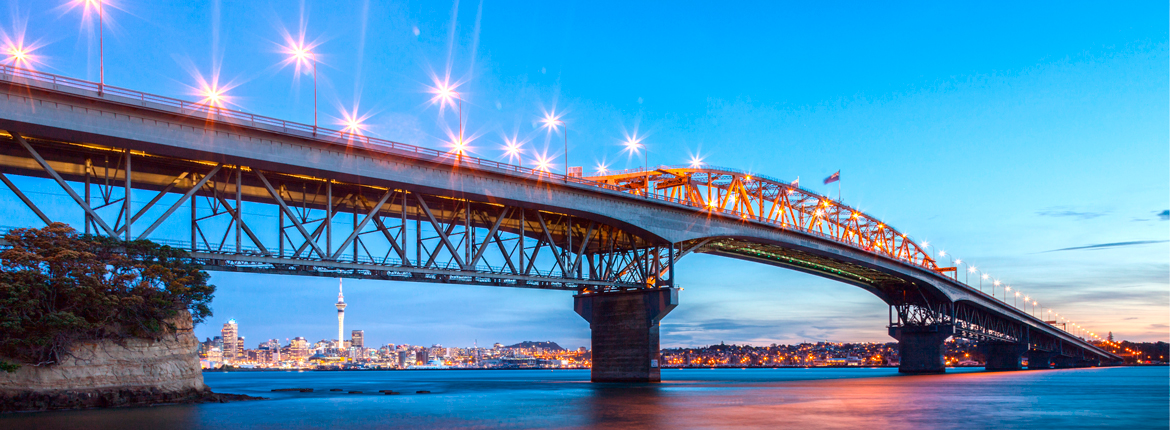
The weakest link
Barney Irvine looks at Auckland’s reliance on its harbour bridge.
It was the closest thing to ‘carmageddon’ that Auckland had ever seen. In September last year, a truck accident on the Auckland Harbour Bridge damaged part of the bridge’s central structure, forcing a partial closure. The disruption lasted for weeks (in spite of a remarkably quick and effective repair job by Waka Kotahi New Zealand Transport Agency), bringing Auckland’s transport network to its knees.
The incident highlighted the fragility of the bridge, and what that fragility means for the wider transport network. Over 170,000 vehicles rely on the bridge to get across the harbour each day, and when something goes wrong, it goes badly wrong. It also turned up the heat on a debate that has been raging for almost as long as the bridge has been in operation: when will Auckland get another Waitematā Harbour crossing?
When the bridge was built in 1959, the design was scaled back to just four lanes from the five or six that were originally proposed. Leaders at the time sought to keep costs down, and massively underestimated the number of vehicles that would be using the new crossing.
As soon as the bridge opened, new suburbs began growing like topsy on the North Shore; within ten years the number of lanes on the bridge had to be doubled to eight.
As the volume of traffic has increased, the structure of the bridge has struggled to cope, in spite of extensive strengthening work. Heavy trucks were banned from using the outside lanes in 2007 (until strengthening was completed in 2009), and it’s a question of when, not if, further truck restrictions will be needed.
Meanwhile, the success of the Northern Busway (which is now approaching capacity) highlights the opportunity that was missed when a dedicated public transport connection was left out of the original design.
Auckland is also facing a highly complex and expensive process of retro-fitting the bridge with a walking and cycling connection (the project now called the Northern Pathway), because none was provided back in 1959.
So when will Auckland get a new crossing and what sort of crossing will it be? The current plan is to construct both a new rail crossing and a new road crossing close to the existing bridge. The Government says that some form of rail crossing will be needed by the mid-2030s and that a road crossing will be needed a decade after that.
But no decisions have been made on whether the crossings will be bridges or tunnels, whether they’ll be built together or separately, or how they’ll dovetail with wider planning for Auckland's public transport and cycling networks. All of that will come out of a business case the Government is currently working through, the next stage of which will get underway later this year.
Whatever the approach, the costs will be astronomical. A combined road and rail tunnel would cost at least $10 billion.
What’s the AA’s view?
It’s too early to call for specific options or approaches but it’s clear that the crossing (or crossings, if done separately) will need to cater to all modes of transport – road, rail, walking and cycling.
In a recent survey of AA Members (which garnered 500 responses), 39% of those who answered felt that road and rail should be built at the same time, ahead of 38% who felt that rail should come first and just 17% who felt that road should come first.
It’s also clear that the situation needs to be resolved as soon as possible – i.e. in 10-15 years, which is the fastest that a project of this scale can be built, not in 30-plus. That means the options need to be worked through with real urgency.
But it doesn’t mean rushing to a decision. This is a once-in-a-century project; we need to take time to review all the options and make sure we’re getting maximum benefit.
For instance, if the road and rail crossings were built separately, how feasible would it be to locate the road component further to the east or west of the bridge, in a completely different transport corridor? The route that Waka Kotahi has previously put forward – between Esmonde Road and Wynyard Quarter – would connect with badly clogged parts of the motorway network, both at the northern and southern ends.
Designing the crossing to bypass that congestion, rather than just providing another way across the harbour might be the only way to achieve a step-change in terms of traffic flows and the resilience of the network, which is what most people want and expect from the project. But it would come at a much higher cost.
More than anything, we need to learn from the mistakes of the past. We can’t let short-sightedness or extreme thriftiness stand in the way of getting it right first time.
Reported by Barney Irvine for our AA Directions Autumn 2021 issue
